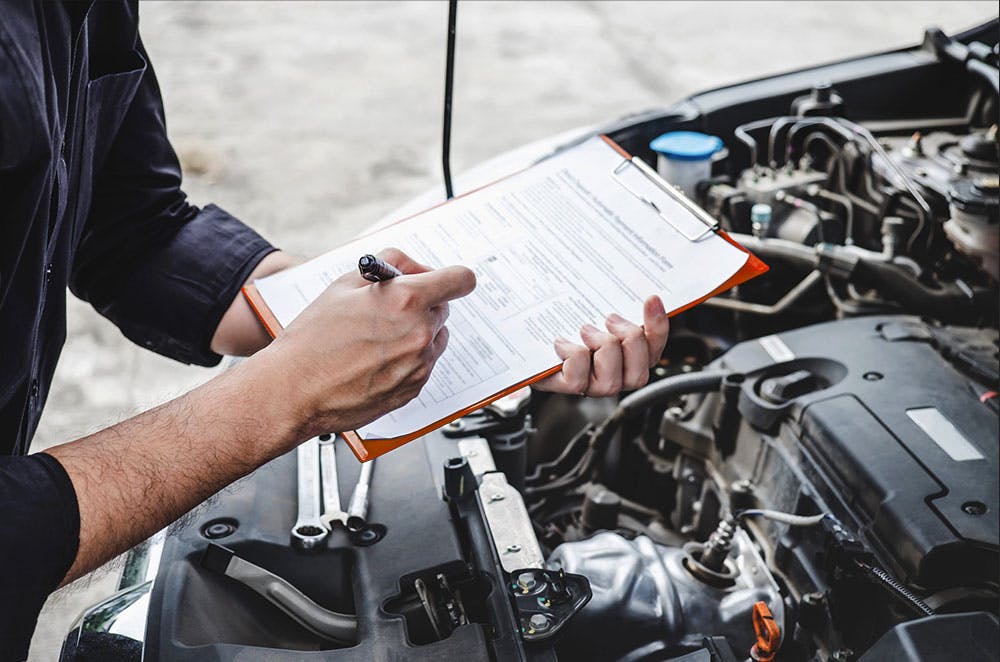All Categories
Featured
When it comes to car maintenance, tires are often forgotten, despite being an important factor in both security and efficiency. Recognizing exactly how to pick the best tires for your automobile needs understanding your driving problems, efficiency requirements, and the different tire options readily available.
![]()
All-Season Tires: These are the most typical kind, made for a range of driving problems, consisting of damp and dry roadways. They provide a balanced efficiency, making them a good selection for everyday driving in regions with modest climates.
Summer Season Tires: Suitable for warmer climates, summer tires supply outstanding efficiency on damp and completely dry roads, providing premium traction and handling. They are not appropriate for snowy or icy conditions.
Wintertime Tires: Wintertime tires are specifically developed to deal with snow, ice, and freezing temperatures. Made from an unique rubber substance that continues to be flexible in winter, they include deep treads that hold the road, supplying better control and safety and security in wintertime problems.
Performance Tires: For those driving sports vehicles or searching for boosted handling, efficiency tires use better responsiveness, catching capabilities, and enhanced grip. These tires prioritize performance but might sacrifice comfort and toughness.
225: The width of the tire in millimeters. 50: The element ratio, or the height of the sidewall as a percent of the tire's width. R: Radial construction, which is one of the most usual design for modern tires. 17: The diameter of the tire in inches, matching the size of the wheel. When changing your tires, it's generally best to match the initial dimension for your vehicle to keep the designated equilibrium of handling, safety, and comfort. Altering tire sizes can affect efficiency, including speedometer accuracy and fuel effectiveness.
![]()
Urban and City Driving: If most of your driving happens on well-paved city roads, all-season tires are generally the ideal option. They offer ample hold and comfort in moderate conditions, with a focus on effectiveness.
Highway Driving: For frequent highway vehicle drivers, tires that use resilient durability and reduced road noise, such as visiting tires, are optimal. These tires give a smooth ride and are maximized for fuel effectiveness over long distances.
Off-Road Driving: If you drive an SUV or truck and regularly venture off the beaten track, you'll require tires developed for rugged surface. All-terrain or mud-terrain tires supply far better grip and resilience for driving on crushed rock, mud, or unpaved roadways.
Symmetrical Tread: Most all-season tires feature a symmetrical step pattern, which supplies a balanced performance for regular driving problems. It's perfect for completely dry roadways, in addition to modest damp problems.
Asymmetrical Tread: These tires have various walk patterns on the outdoors and inside, improving cornering and security. They supply a far better grasp on both damp and completely dry roadways, making them a preferred option for efficiency cars.
Directional Footstep: Developed with a V-shaped pattern, these tires stand out at transporting water far from the walk. They give much better traction in stormy and snowy conditions, minimizing the threat of hydroplaning.
Checking Tire Stress: Underinflated tires can negatively influence handling and fuel efficiency, while overinflated tires can enhance the danger of blowouts. Check the tire stress frequently and ensure it meets the manufacturer's specifications.
Tire Turning: To ensure even put on, tires ought to be revolved every 6,000 to 8,000 miles. Irregular wear can create early tire failure and affect your automobile's positioning and handling.
![]()
Wheel Positioning: Misalignment can trigger your tires to use erratically and negatively affect your automobile's handling. Have your automobile's alignment examined on a regular basis, especially if you discover drawing away.
Final thought. Whether you need all-season tires for day-to-day driving, wintertime tires for snowy problems, or efficiency tires for much better handling, understanding your needs is key to making the best choice. Normal tire upkeep is also vital for keeping your tires in optimal problem.

- Comprehending Tire Types. The initial step in selecting the best tire is comprehending the different kinds and their features. Each sort of tire is engineered for particular conditions, so knowing which one fits your requirements is important.
All-Season Tires: These are the most typical kind, made for a range of driving problems, consisting of damp and dry roadways. They provide a balanced efficiency, making them a good selection for everyday driving in regions with modest climates.
Summer Season Tires: Suitable for warmer climates, summer tires supply outstanding efficiency on damp and completely dry roads, providing premium traction and handling. They are not appropriate for snowy or icy conditions.
Wintertime Tires: Wintertime tires are specifically developed to deal with snow, ice, and freezing temperatures. Made from an unique rubber substance that continues to be flexible in winter, they include deep treads that hold the road, supplying better control and safety and security in wintertime problems.
Performance Tires: For those driving sports vehicles or searching for boosted handling, efficiency tires use better responsiveness, catching capabilities, and enhanced grip. These tires prioritize performance but might sacrifice comfort and toughness.
- Tire Size Matters. When selecting brand-new tires, tire dimension is one of the most crucial factors to consider. Tire size is shown by a collection of numbers published on the sidewall, such as "225/50R17." Below's how to review them:
225: The width of the tire in millimeters. 50: The element ratio, or the height of the sidewall as a percent of the tire's width. R: Radial construction, which is one of the most usual design for modern tires. 17: The diameter of the tire in inches, matching the size of the wheel. When changing your tires, it's generally best to match the initial dimension for your vehicle to keep the designated equilibrium of handling, safety, and comfort. Altering tire sizes can affect efficiency, including speedometer accuracy and fuel effectiveness.
- Driving Problems and Tire Efficiency. Where you drive and how you drive plays a considerable role in identifying the appropriate tire for your vehicle. Right here's what to take into consideration based upon your driving behaviors:

Urban and City Driving: If most of your driving happens on well-paved city roads, all-season tires are generally the ideal option. They offer ample hold and comfort in moderate conditions, with a focus on effectiveness.
Highway Driving: For frequent highway vehicle drivers, tires that use resilient durability and reduced road noise, such as visiting tires, are optimal. These tires give a smooth ride and are maximized for fuel effectiveness over long distances.
Off-Road Driving: If you drive an SUV or truck and regularly venture off the beaten track, you'll require tires developed for rugged surface. All-terrain or mud-terrain tires supply far better grip and resilience for driving on crushed rock, mud, or unpaved roadways.
- Tire Tread Patterns. Tire walk patterns influence exactly how your automobile holds the road, especially in unsafe or damp conditions. Understanding tread layout is key to ensuring risk-free handling:
Symmetrical Tread: Most all-season tires feature a symmetrical step pattern, which supplies a balanced performance for regular driving problems. It's perfect for completely dry roadways, in addition to modest damp problems.
Asymmetrical Tread: These tires have various walk patterns on the outdoors and inside, improving cornering and security. They supply a far better grasp on both damp and completely dry roadways, making them a preferred option for efficiency cars.
Directional Footstep: Developed with a V-shaped pattern, these tires stand out at transporting water far from the walk. They give much better traction in stormy and snowy conditions, minimizing the threat of hydroplaning.
- Tire Maintenance for Durability. As soon as you've picked the ideal tires, it's crucial to maintain them correctly to prolong their life expectancy and make sure continued performance. Normal tire upkeep includes:
Checking Tire Stress: Underinflated tires can negatively influence handling and fuel efficiency, while overinflated tires can enhance the danger of blowouts. Check the tire stress frequently and ensure it meets the manufacturer's specifications.
Tire Turning: To ensure even put on, tires ought to be revolved every 6,000 to 8,000 miles. Irregular wear can create early tire failure and affect your automobile's positioning and handling.

Wheel Positioning: Misalignment can trigger your tires to use erratically and negatively affect your automobile's handling. Have your automobile's alignment examined on a regular basis, especially if you discover drawing away.
- Speak with an Expert. While you might have a general understanding of the sorts of tires available, it's always an excellent concept to seek advice from with a tire expert. They can give professional advice based on your certain car version, driving problems, and efficiency needs.
Final thought. Whether you need all-season tires for day-to-day driving, wintertime tires for snowy problems, or efficiency tires for much better handling, understanding your needs is key to making the best choice. Normal tire upkeep is also vital for keeping your tires in optimal problem.
Latest Posts
Improve Your Home's Outside with Weathercraft's Siding Solutions
Published May 28, 25
1 min read
Safeguard and Improve Your Home with Weathercraft's Siding Solutions
Published May 27, 25
1 min read
Uncover Brake Repair & More: Full Repair Options from Montclare Auto Repair
Published May 27, 25
1 min read
More
Latest Posts
Improve Your Home's Outside with Weathercraft's Siding Solutions
Published May 28, 25
1 min read
Safeguard and Improve Your Home with Weathercraft's Siding Solutions
Published May 27, 25
1 min read
Uncover Brake Repair & More: Full Repair Options from Montclare Auto Repair
Published May 27, 25
1 min read